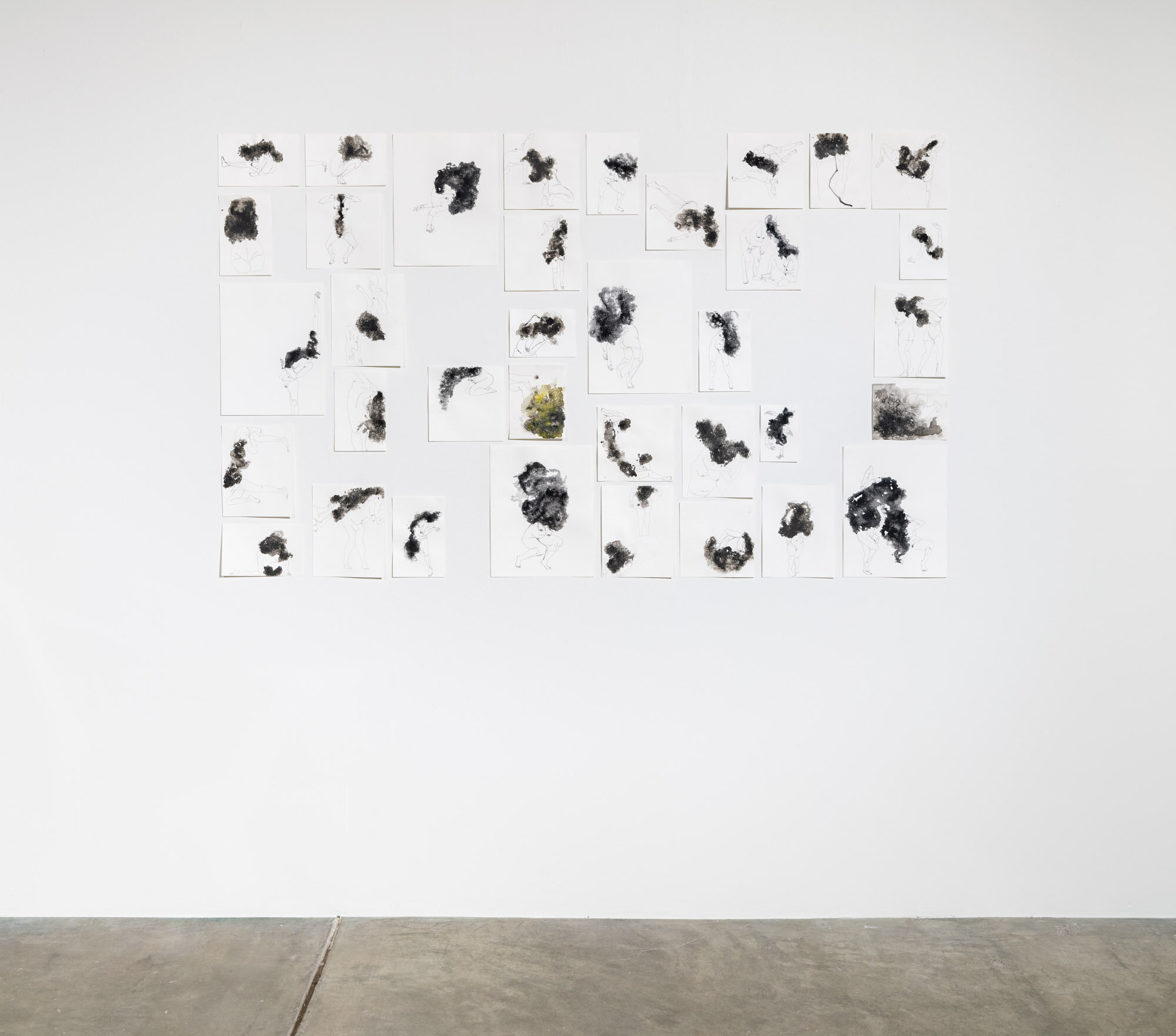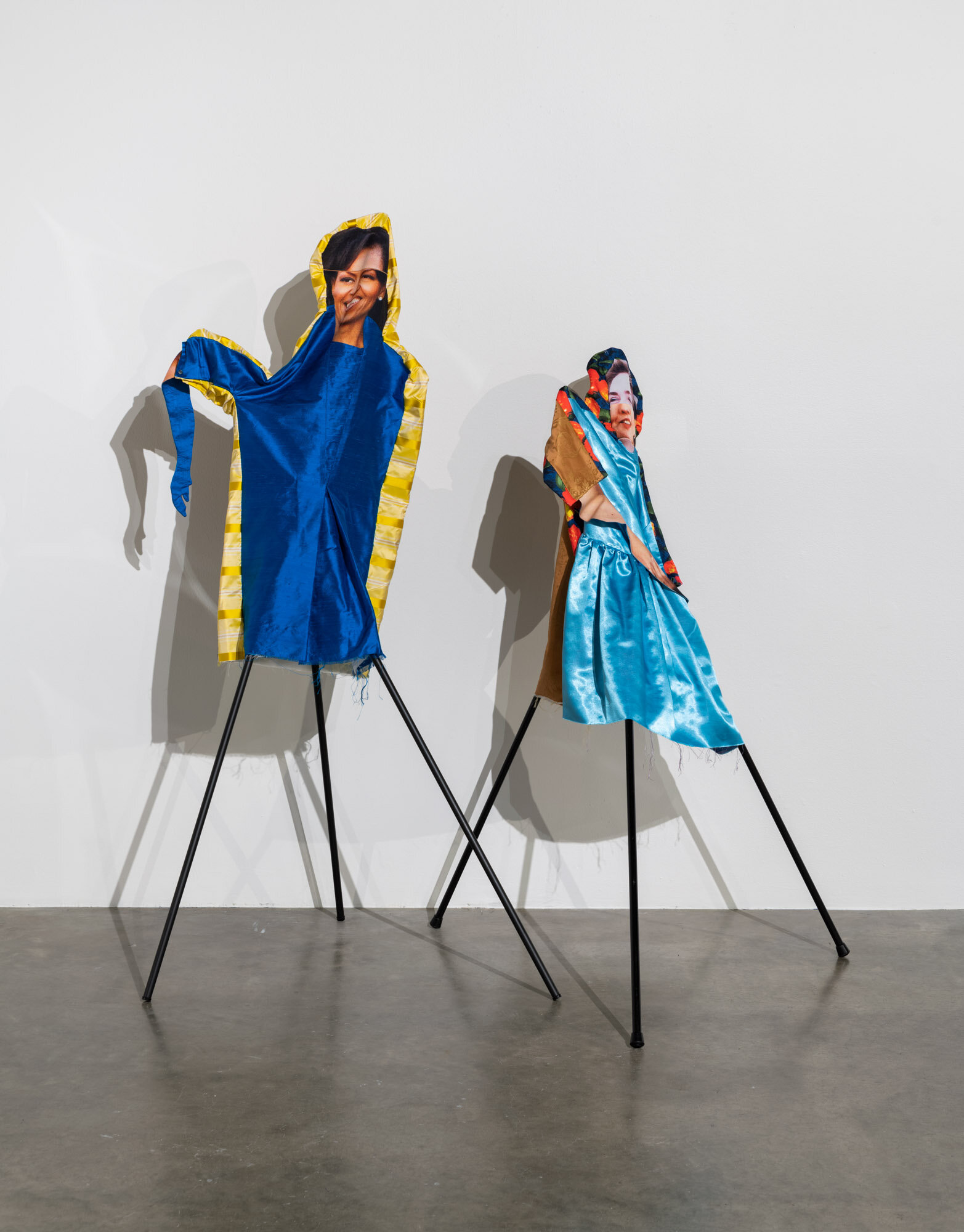Time Being
June 18 – August 8, 2021
Curated by Blake Shell
Photos by Mario Gallucci
Gallery Guide
Video by Eric Mellencamp
19 January 2022 on Zoom
Time Being catalog release and talk with essayist Dr. Jordan Amirkhani, artists and curator
Catalog available for purchase online at Shop Ox and in-person at Oregon Contemporary
We hosted a talk with Dr. Jordan Amirkhani and the artists and curator of Time Being in January upon the release of the catalog. Dr. Jordan Amirkhani's research, writing, and curatorial practice reflect her commitment to intersectional feminist critique and the contextualization of issues of gender, class, and race within the development of European and American art from the nineteenth century to the present. Jordan is currently based in Brooklyn, NY and was recently appointed Curator at Rivers Institute for Contemporary Art & Thought in New Orleans, Louisiana. She is a regular contributor to Artforum, Art in America, Daily Serving, and Burnaway.
Learn more about Dr. Amirkhani at https://www.jordanamirkhani.com/.
August 7, 2021 5-9pm
First Saturday open house and closing reception for Time Being
a convoluted remedy to my soft hands Performance by Maya Vivas at 8pm
Live feed and premeditation converse while maneuvering through accrued diasporic therapies. This piece was developed in collaboration with DB Amorin, Roland Dahwen & Kevin Holden. With support from RACC, Paragon at PCC & Oregon Contemporary.
Time Being
Time being what it is. For the time being. What is a Time Being?
Stretched, lengthened, squished, time-looped, mediated, frozen, layered, and ever-changing—the figures and bodily parts in this exhibition reflect on humanity’s relationship with time, history, and identity.
All of the artists in this exhibition do something strange with the figure. Somehow they make it weird, whether through exaggerations of scale or the flattening of time and space. Some pieces feel as if they could be moving forward, or backward, at any moment. Other works speak to our relationship with time itself, by reflecting on memories and stories and how we perceive our own histories and identities. Do these things shift continuously, or is there any permanence within our own selves?
As we near an end to the pandemic, as we wrangle our lives back in some ways, we can’t undo the fact of this past year. It remains inside us, inside our physical selves. The unusual experience of feeling unmoored from time and being physically separated from others, combined with mediated forms of communication, has made life feel unreal. We will carry that experience until it dissipates. As with any wound, eventually it will cease to exist, it will be reduced to a scar. In the meantime, we need to reflect, to process, and to feel our way through the final part of this transition. Samantha Wall said, “It just is, until it’s not.” We can sink into despair or take solace, depending on the moment.
Bean Gilsdorf’s work freezes moments in time, collapsing multiple familiar images into a single space. Reflecting on memory, repetition in media, and the diminishment of women throughout history, the artist takes an image of Jackie Kennedy from the day of JFK’s assassination as a key component of contemplation. Few images have been made to bear the weight of so many meanings and associations, ranging from fashion to politics to national trauma, and even to a vast labyrinth of conspiracy theories. As viewers of Gilsdorf’s work, we must wrestle with the compression of so many meanings into one image. Does this make the meaning clearer or more real to us as viewers, or negate it through too many iterations?
Lisa Jarrett’s works examine Black femme culture through the lens of hair and beauty rituals. How do routines, products, and beauty standards affect the self-reflections, representations, and stories of those who identify as Black femme? Hair connects us to our mothers, our ancestors, our histories; it speaks deeply of who we are, how we are seen, and how we see one another.
Jaleesa Johnston’s figures are based on her movement performances. She collapses time, as Gilsdorf does, but instead of working with historical photos, Johnston repeatedly draws her own image. Different versions of herself appear to meet simultaneously. In her drawings and video works, representations of the Black body vary from clear figures to complete abstractions that the viewer can only glimpse, each form too close to be distinct.
Elizabeth Malaska’s work layers female figures within domestic scenes. Each tableau’s story is also layered, incorporating gestures and poses that recall historical moments as well as objects and clothing that are common contemporary markers. The tensions between these different eras suggest longer and more complex narratives, leaving the context up to each viewer. Are these cyclical time loops, or myths that speak to universal truths?
Maya Vivas’s sculptural ceramics are queered future bodies engaged in self-evolution. Each figure navigates different stages of augmentation, and all are in continual unspoken conversation with one another. They ebb, flow, bulge, and retract. Are they growing or shrinking? Are they birthing or being birthed? The swirling figures feel as though they could be from ancestral times, but contemporary cultural markers propel them into the present.
Samantha Wall’s figures reflect a fragmented interiority influenced by the events of the past year. We see into the body as if looking through an X-ray, but instead of sinew and bone, affective forms are revealed, sculpted by what they touch and what touches them. We are shaped by discourse, current events, and familiar bonds; however, being deprived of social interaction has created a hunger for other bodies, as well as a fear of them. Her figures reflect our longings and our conflicted feelings about touch.
Time Being is supported by The Ford Family Foundation. Oregon Contemporary Art Center is also supported by The Andy Warhol Foundation for the Visual Arts, the Robert & Mercedes Eichholz Foundation, VIA Art Fund and Wagner Foundation, the Maybelle Clark Macdonald Fund, the James F. & Marion L. Miller Foundation, the National Endowment for the Arts, the Oregon Arts Commission, the Oregon Arts and Culture Emergency Fund, Oregon CARES, and the Regional Arts & Culture Council. Other businesses and individuals provide additional support.
Bean Gilsdorf's artistic practice examines the iconography of American political and cultural histories. Her projects have been exhibited at the Museum of Contemporary Art Santa Barbara, the Wattis Institute for Contemporary Arts, and the American Textile History Museum, as well as exhibition spaces in Poland, England, Italy, China, and South Africa. She is the former editor in chief of Daily Serving, an international publication for the contemporary arts, and her reviews and essays have been included in publications such as Art in America, Frieze, the Los Angeles Review of Books, and Momus. Gilsdorf was a columnist-in-residence for SFMOMA's Open Space, and was the 2018 Art Writer in Residence at SPACES in Cleveland, Ohio. She is the recipient of numerous grants and fellowships, including an Andy Warhol Foundation Arts Writers Grant (2020), two Fulbright Fellowships to Poland (2015–2016 and 2016–2017), and a Graduate Fellowship at Headlands Center for the Arts (2012).
Lisa Jarrett (Portland, OR) is an artist and educator. She is Associate Professor of Community and Context Arts at Portland State University and the co-founder/director of various collaborations including KSMoCA (Dr MLK Jr School Museum of Contemporary Art) and Art 25: Art in the Twenty Fifth Century. Her intersectional practice considers the politics of difference within a variety of settings including: schools, landscapes, fictions, racial imaginaries, studios, communities, museums, galleries, walls, mountains, mirrors, floors, rivers, and lenses. She exists and makes socially engaged work within the African Diaspora. She recently discovered that her primary medium is questions.
Jaleesa Johnston is an interdisciplinary artist currently living and working in the Pacific Northwest. She holds a BA from Vassar College and an MFA from the San Francisco Art Institute. Her work explores the black female body as both subject and material through performance, video, photography, sculpture and collage. She has been the recipient of the AICAD Post-Graduate Teaching Fellowship, Centrum’s Emerging Artist Residency and Open Signal’s New Media Fellowship. Jaleesa has exhibited her work in cities along the west coast, including San Francisco, Portland and Seattle, and she currently facilitates workshops and classes in new media and performance art.
Born and raised in Portland, Elizabeth Malaska earned her MFA from the Pacific Northwest College of Art. She is known for paintings that explore the place of the female body in a range of art-historical contexts, raising issues about femininity, power, domination, and vulnerability, with social and political implications in our current times. Her work has been included in exhibitions regionally and nationally, including in Oregon at Portland Community College’s North View Gallery; the University of Oregon’s White Box; Disjecta; Milepost 5; Nationale; and the Oregon State Capitol. She is the recipient of the Hallie Ford Fellowship, a grant from the Elizabeth Greenshield Foundation, and a 2021 Guggenheim Foundation Fellowship in the Fine Arts. Her work is part of the permanent collection at The Portland Art Museum and the Schneider Museum of Art.
Maya Vivas is a multidisciplinary artist working in a variety of mediums such as ceramic, performance, painting, and installation. Maya has exhibited work, spoken on panels and hosted workshops throughout the United States including venues and institutions such as Portland Institute for Contemporary Art, The National Council on Education for the Ceramic Arts, Louisiana State University and Yale. Vivas is also co-founder of Ori Gallery. Whose mission is to redefine "the white cube" through amplifying the voices of Queer and Trans Artists of color, community organizing and mobilization through the arts.
Samantha Wall, originally from Seoul, South Korea, is an artist working in Portland, Oregon. Wall immigrated to the United States as a child and comes from a multiracial background. Operating from within this framework, her drawings embody the experience of navigating transcultural identity. Her projects have been exhibited at the Hangaram Art Museum in the Seoul Arts Center, CUE Art Foundation in New York, and the Portland Art Museum, as well as exhibition spaces in New Orleans, Los Angeles, and Frankfurt. She is the recipient of numerous grants and awards including an MFA Grant from the Joan Mitchell Foundation, a Golden Spot Residency Award from Crow's Shadow Institute for the Arts, and a Hallie Ford Fellowship from the Ford Family Foundation.






















